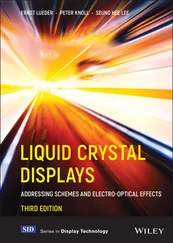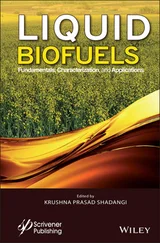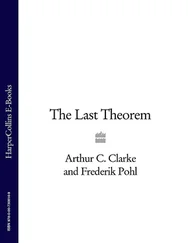314 311
315 312
316 313
317 314
318 315
319 316
320 317
321 318
322 319
323 320
324 321
325 322
326 323
327 324
328 325
329 326
330 327
331 328
332 329
333 330
334 331
335 332
336 333
337 334
338 335
339 336
340 337
341 338
342 339
343 340
344 341
345 342
346 343
347 344
348 345
349 346
350 347
351 349
352 350
353 351
354 352
355 353
356 354
357 355
SCIENCES
Physics of Soft Matter , Field Director – Françoise Brochard-Wyart
Lyotropic and Thermotropic Liquid Crystals , Subject Heads – Pawel Pieranski and Maria Helena Godinho
Liquid Crystals
New Perspectives
Coordinated by
Pawel Pieranski
Maria Helena Godinho

First published 2021 in Great Britain and the United States by ISTE Ltd and John Wiley & Sons, Inc.
Apart from any fair dealing for the purposes of research or private study, or criticism or review, as permitted under the Copyright, Designs and Patents Act 1988, this publication may only be reproduced, stored or transmitted, in any form or by any means, with the prior permission in writing of the publishers, or in the case of reprographic reproduction in accordance with the terms and licenses issued by the CLA. Enquiries concerning reproduction outside these terms should be sent to the publishers at the undermentioned address:
ISTE Ltd
27-37 St George’s Road
London SW19 4EU
UK
www.iste.co.uk
John Wiley & Sons, Inc.
111 River Street
Hoboken, NJ 07030
USA
www.wiley.com
© ISTE Ltd 2021
The rights of Pawel Pieranski and Maria Helena Godinho to be identified as the author of this work have been asserted by them in accordance with the Copyright, Designs and Patents Act 1988.
Library of Congress Control Number: 2021934282
British Library Cataloguing-in-Publication Data
A CIP record for this book is available from the British Library
ISBN 978-1-78945-040-8
ERC code:
PE3 Condensed Matter Physics
PE3_13 Structure and dynamics of disordered systems: soft matter (gels, colloids, liquid crystals, etc.), liquids, glasses, defects, etc.
The story of liquid crystals is that of a transgression of frontiers and a breaking of common beliefs.
Indeed, liquid crystals were discovered by a biochemist, Friedrich Reinitzer, who shared his perplexity with a physicist, Otto Lehmann. Subsequently, crystallographers, mineralogists, experts in optics, magnetism, thermodynamics, chemists, etc., contributed to the recognition of liquid crystals as new states of matter, called mesophases by George Friedel, endowed with structures intermediate to those of isotropic liquids and crystals.
Mesophases are so fragile that they can be easily perturbed by moderate mechanical, electric, magnetic or thermal stresses that generate various defects, such as disclinations, dislocations, walls, monopoles or multipoles. Remarkably, these defects were also observed to appear spontaneously during phase transitions.
Inspired by experimental discoveries, theorists and mathematicians became fascinated by the symmetries of mesophases and recognized these beautiful and mysterious defects as topological singularities of vectorial, tensorial or complex fields. This led to the introduction of the concept of order parameters, resulting from symmetry breaking. In this frame, the generation of topological defects during certain phase transitions appeared as a natural, expected consequence. It was thus appreciated that the physics of liquid crystals and their defects had a permeable border with the Kibble–Zurek mechanism in cosmology.
The discovery of liquid crystals was made in substances extracted from carrots. Prior to that, Mettenheimer and Virchov observed birefringent lamellar mesophases in aqueous solutions of myelin, a substance extracted from nerve tissues. Mesophases also appear in solutions of cellulosic compounds or in suspensions of elongated particles, such as cellulose nanocrystals, tobacco mosaic viruses or bacteria. Therefore, from their origin, liquid crystals share a border with living matter.
In this book, the borders with cosmology and living matter, as well as other borders will be crossed several times. The title Liquid Crystals – New Perspectives announces that when borders are crossed, new perspectives are unlocked.
The first chapter, Singular Optics of Liquid Crystal Defects , explores a terra incognita : the light–matter interaction that occurs when light and/or matter are endowed with topological defects. It tells how the physics of topological defects in liquid crystals has progressively enriched liquid crystal optics as singular optics have developed. This is rooted in a few generic features: the self-organization capabilities of soft matter systems and their sensitivity to external stimuli. Remarkably, all of the assets of liquid crystals that make them ubiquitous in our daily life as liquid crystal displays, now open up several options to explore fundamental optical phenomena, based on the coupling between the polarization and spatial degrees of freedom. Also, this allows us to envision the development of future applications, for instance in optical imaging, beam shaping and the manipulation of matter by light.
The second chapter, Control of Micro-Particles with Liquid Crystals , transgresses two frontiers. First, that between liquid crystals and electro-kinetic phenomena. The authors show how electrophoresis and electro-osmosis, well known from studies with isotropic liquids, acquire new unexpected features when the anisotropy and nonlinear hydrodynamics of liquid crystals are switched on. The second transgression is that of the frontier with living matter. The quasi-random swimming motion of flagellated bacteria in isotropic liquids becomes ordered in lyotropic liquid crystals and even more fascinating in the presence of topological defects, disclinations.
The third chapter, Thermomechanical Effects in Liquid Crystals , crosses the border between liquid crystals and out-of-equilibrium thermodynamics. Anisotropy and nonlinear hydrodynamics of liquid crystals radically alter the phenomena driven by thermal gradients. For example, the threshold of the Rayleigh–Bénard instability in nematics is known to be lowered by a factor of 1000 with respect to isotropic liquids. The thermomechanical and thermohydrodynamical effects discussed in this chapter are even more original because they do not exist in isotropic fluids. Once again, they become fascinating in the presence of topological defects. This chapter breaks the common belief about a unique explanation, in terms of the Leslie theory, of the Lehmann effect, i.e. the rotation of cholesteric droplets driven by a thermal gradient.
The fourth chapter, Physics of the Dowser Texture , transgresses the common belief about the ephemeral character of a distorted nematic texture, bearing varying names in the past: splay-bend state, H state, inversion wall, quasi-planar or flow-aligned. Dubbed as the dowser texture because of its resemblance with the wooden tool of dowsers, this texture is in fact not unstable but only metastable and in certain conditions can be preserved indefinitely. As its complex order parameter eiϕ is degenerated with respect to the phase ϕ , the dowser texture is sensitive to vector fields and as a consequence it is endowed with unprecedented properties called cuneitropism , rheotropism and electrotropism . The dowser texture also appears as a natural universe of nematic monopoles and antimonopoles that can be set in motion and brought to collisions, resulting in the annihilation of monopole–antimonopole pairs, analogous to the annihilation of electron-positron pairs in hadron colliders.
Читать дальше













